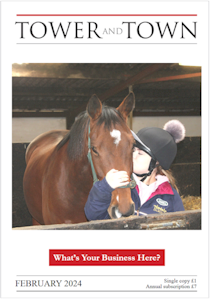

Tower and Town, February 2024 (view the full edition) (view the full edition)Nature Notes: ThrostlingStrong winds in December, floods in January, then colder, the possibility of snow for a few days and soon it’s February, never a month for reliable weather. Can the natural world lift our spirits and banish the gloom of grey winter skies? Well, of course it can, given a few hours of sunshine and warmth. Flowers appear, the first butterflies are on the wing, and a few of our resident birds are beginning to clear their throats and sing: robin, hedge sparrow and chaffinch for example. Then from the high branches of a bare tree a more persistent songster starts up: bo-peep, bo-peep, bo-peep!...shurlair, shurlair!...chuh-chuh-chair, chuh-chuh-chair! Such a varied collection of loud piping calls, repeated in little sets, is the speciality of the song thrush or ‘throstle’, to give it its old-fashioned name. Someone described its performance as that of a chorister, diligently repeating and perfecting his musical phrases, one by one. The nightingale may be the premier songster in the British countryside, but for sheer variety of calls the song thrush takes some beating, and it brightens up a cold February morning.
On bright, sunny mornings blackbirds are trying out the first of their sweet, fluty tones: what a striking bird the male is at the start of the breeding season, with his shiny black body and bright orange-yellow bill and eye rim! In February, too, fieldfares and redwings have stripped the berries from the hedgerows and are venturing into garden orchards to feed on fallen apples under the trees. These gregarious thrushes arrive in autumn from colder climes - Scandinavia, Russia and Iceland - following warmth and the promise of food. In late March keen birders will sometimes spot several thrush species together, as a migrant ring ouzel mixes with departing blackbirds, fieldfares and redwings that have wintered here. Something disturbs them - perhaps a sparrow-hawk or a merlin - then they are up and away, becking, chattering, chacking and seeping. Robin Nelson |